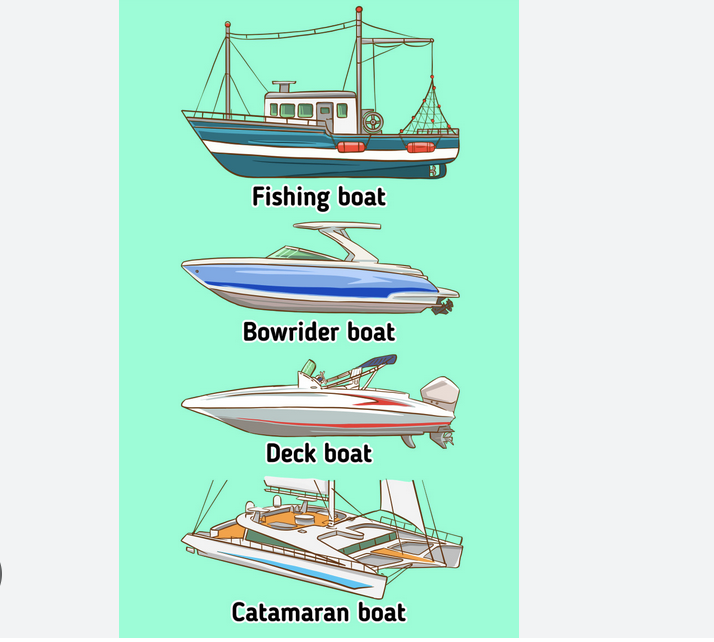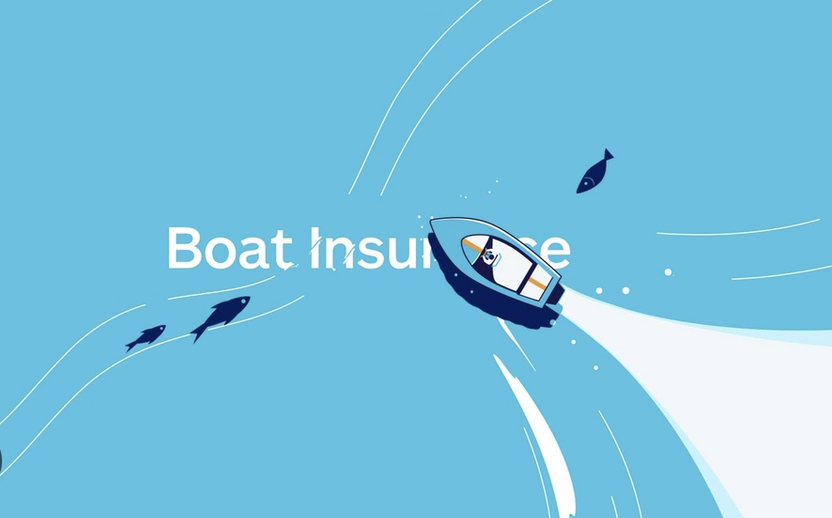
Embarking on the journey to your first boat purchase can be an exciting yet daunting task. The sheer variety of boat types, buying options, and the intricacies of boat ownership in New England lakes, can leave a newcomer feeling overwhelmed. However, fear not! In this comprehensive guide, we will be navigating the waters of choice together, covering crucial aspects that every first-time boat buyer should consider. From understanding the types of boats suitable for various activities to deciding between new and pre-owned vessels, from exploring dealer benefits to financing options, and finally, ensuring a smooth sea trial and seamless registration process, we’ve got you covered.
Types of Boat by Activity
Before diving into the world of boat purchasing, it’s essential to identify the type of activities you plan to enjoy on the lake while navigating the waters of choice. Different boats are designed for various purposes, and selecting the right one ensures a fulfilling boating experience. Here are some common boat types based on different activities:
- Bass Boats: Designed for freshwater fishing, bass boats are nimble and feature a low profile, making them ideal for navigating through shallower waters.
- Pontoon Boats: Offering stability and ample space, pontoon boats are great for relaxed fishing trips with friends and family.
- Bowrider Boats: Known for their versatility, bowriders are excellent for water sports, cruising, and family outings. They have an open bow area for additional seating.
- Deck Boats: Combining elements of pontoon and bowrider boats, deck boats provide a spacious deck layout for socializing and various water activities.
- Sailboats: Ideal for those seeking a serene and eco-friendly boating experience, sailboats are propelled by wind and offer a unique sense of freedom on the water.
- Jet Boats: These compact, high-performance boats are designed for speed and agility, making them perfect for thrill-seekers who enjoy water sports like wakeboarding and waterskiing.
- Cabin Cruisers: Featuring onboard cabins and amenities, cabin cruisers are suitable for extended stays on the water. They offer a balance between comfort and functionality.
- Pontoon boats, with their flat-bottomed design and buoyant tubes, are excellent choices for those seeking stability and comfort. These boats are perfect for entertaining large groups, enjoying a leisurely cruise, or setting up a floating base for swimming and sunbathing.

Buying New or Pre-Owned
Once you’ve identified the type of boat that suits your needs, the next decision is whether to buy a new or pre-owned vessel. Both options have their pros and cons, and your choice may depend on factors such as budget, personal preferences, and the availability of specific models.
Buying New
Warranty and Reliability: New boats often come with manufacturer warranties, providing peace of mind and protection against potential defects.
Latest Features: Buying new ensures access to the latest technological advancements, safety features, and design innovations in the boating industry.
Customization: New boats offer the opportunity to customize features and accessories to meet your specific preferences.
Buying Pre-Owned
Cost Savings: Pre-owned boats typically come with a lower price tag, allowing you to get more value for your budget.
Depreciation: Unlike cars, boats tend to depreciate quickly in the first few years. Buying pre-owned means you avoid the steepest part of this depreciation curve.
Proven Performance: Many pre-owned boats have a track record, and you can research their reliability and performance in real-world conditions.
Dealer Benefits
- Choosing a reputable boat dealer is crucial for a positive buying experience. Dealerships offer several benefits that can simplify the boat purchasing process and enhance your overall satisfaction
- Expert Guidance: Knowledgeable sales professionals can provide valuable insights, helping you make informed decisions based on your boating needs and preferences.
- Variety of Options: Dealerships often have a diverse inventory of new and pre-owned boats, allowing you to compare different models, features, and price ranges in one location.
- Service and Maintenance: Established dealerships typically have on-site service departments, ensuring that your boat is properly maintained and serviced by experienced technicians.
- Financing Assistance: Many dealerships offer financing options, making it convenient for buyers to secure a loan and navigate the financial aspects of boat ownership.

Financing Options
Financing a boat purchase is a common practice, and understanding your financing options when navigating the waters of choice, is essential for a smooth buying process. Here are some financing options to consider:
- Marine Lenders: Specialized marine lenders understand the unique aspects of boat financing. They may offer competitive interest rates and terms tailored to the boating industry.
- Banks and Credit Unions: Traditional financial institutions also provide boat loans. It’s advisable to check with your existing bank or credit union to explore their offerings.
- Manufacturer Financing: Some boat manufacturers offer financing directly to customers. While this can be convenient, it’s crucial to compare rates and terms with other financing options.
- Down Payment and Terms: Be prepared to make a down payment, usually ranging from 10% to 20% of the boat’s purchase price. Loan terms vary, with typical durations ranging from five to twenty years.
- Credit Score: A higher credit score generally results in better loan terms. Before applying for a loan, check your credit score and take steps to improve it if necessary.
Sea Trial Checklist
Before finalizing your boat purchase while navigating the waters of choice, it’s essential to take the vessel for a sea trial. This hands-on experience allows you to assess the boat’s performance, handling, and overall condition. Here’s a checklist to ensure a thorough sea trial:
- Check the boat’s exterior for any visible damage, dents, or scratches. Inspect the hull, propeller, and other underwater components for signs of wear or damage.
- Engine Check: Start the engine and listen for unusual noises or vibrations. Check the throttle response, ensuring smooth acceleration and deceleration. Monitor the engine temperature, oil pressure, and fuel levels.
- Handling and Maneuverability: Test the boat’s turning radius and responsiveness to the helm. Assess how the boat handles in various speeds and sea conditions.
- Electronics and Navigation: Verify the functionality of navigation equipment, GPS, and communication systems. Test all electronic controls, such as trim tabs and anchor windlass.
- Comfort and Amenities: Evaluate the comfort of seating and amenities, especially if the boat has a cabin. Test any onboard appliances, such as a stove, refrigerator, or entertainment systems.
- Safety Equipment: Ensure the boat is equipped with essential safety gear, including life jackets, fire extinguishers, and navigation lights. Check that all safety equipment is in good condition and easily accessible.
Boat Buyer’s Checklist
Navigating the boat-buying process can be complex, but having a checklist can help you stay organized and make informed decisions. Here’s a comprehensive boat buyer’s checklist to guide you through the process:
- Define Your Boating Needs:
- Identify the primary activities you plan to enjoy on the water.
- Determine the size and type of boat that suits your needs and preferences.
- Set a Realistic Budget:
- Establish a budget based on your financial capabilities and research the costs associated with boat ownership, including maintenance, storage, and insurance.
- Research Boat Models:
- Explore various boat models that align with your preferences and budget.
- Read reviews, gather information from reputable sources, and consider seeking advice from experienced boaters.
- Dealer Visits:
- Visit multiple dealerships to compare prices, services, and available inventory.
- Ask questions about warranties, after-sales service, and any additional perks offered by each dealer.
- Inspect the Boat:
- Conduct a thorough inspection of the boat’s hull, engine, and interior.
- Look for signs of wear, damage, or poor maintenance.
- Pay attention to details such as the condition of upholstery, flooring, and any signs of water damage.
- Sea Trial:
- Schedule a sea trial with the dealer to experience the boat’s performance firsthand.
- Pay attention to how the boat handles, accelerates, and maneuvers in different conditions.
- Evaluate the comfort and convenience of the boat’s features during the sea trial.
Negotiate Price
Be prepared to negotiate the price based on your research and the condition of the boat.
Consider additional costs, such as taxes and registration fees, when determining your final budget.
If financing is needed, finalize the loan terms with the chosen lender or dealership.
Review all financing documents carefully and ensure you understand the interest rates, repayment terms, and any potential penalties.
Get a Marine Survey
For pre-owned boats, consider hiring a marine surveyor to inspect the boat thoroughly.
A marine survey can uncover hidden issues and provide a comprehensive assessment of the boat’s condition.
Boat Insurance
Explore insurance options for your boat, considering coverage for accidents, theft, and natural disasters.
Compare quotes from different insurance providers to find the best coverage at a reasonable cost.

Plan for Additional Costs
Factor in ongoing costs such as maintenance, fuel, storage fees, and winterization.
Create a budget that accounts for these expenses to ensure a realistic assessment of the overall cost of boat ownership.
Registering Your Boat
Once you’ve completed the purchase, it’s time to register your boat. Boat registration requirements vary by state, so it’s crucial to familiarize yourself with the specific regulations in your area.
- Gather Required Documents:
- Collect essential documents such as the bill of sale, proof of ownership, and any required identification.
- Some states may also require a completed application form for boat registration.
- Visit the Local DMV or Licensing Office:
- Head to your local Department of Motor Vehicles (DMV) or a designated boat licensing office.
- Submit the necessary documents and complete the registration application.
- Be prepared to pay the required registration fees. Fees often depend on the boat’s size and type.
- Some states also impose additional taxes or surcharges on boat registrations.
- Once approved, you’ll be issued registration numbers and decals for your boat.
- Follow the guidelines provided by the licensing office on where to affix the registration numbers and decals on your boat.
- Boat registrations typically expire after a set period. Stay informed about the renewal process and renew your boat registration annually to remain compliant with local regulations.
Training & Hands-On Learning Tips
Whether you’re a novice or have some boating experience, ongoing education and hands-on learning are essential for safe and enjoyable boating. Consider the following tips to enhance your boating skills:
- Take a Boating Safety Course:
- Many states require boaters to complete a boating safety course.
- Even if not mandatory, taking a course can provide valuable knowledge about navigation, rules of the water, and emergency procedures.
- Spend time on the water practicing boat handling, docking, and navigation.
- Familiarize yourself with your boat’s specific controls and features.
- Understand the navigation rules and right-of-way on the water.
- Be aware of navigation markers, buoys, and other aids to navigation.
- Stay informed about weather conditions before heading out on the water.
- Be cautious of changing weather patterns and have a plan in case of adverse conditions.
- Know how to respond to emergencies such as engine failure, man overboard, or adverse weather situations.
- Ensure your boat is equipped with necessary safety equipment, including life jackets, flares, and a first aid kit.
- Familiarize yourself with local boating regulations and any specific rules for the lakes or water bodies you frequent.
- Respect no-wake zones, speed limits, and other boating guidelines.
- Connect with other boaters through local boating clubs or online communities.
- Networking with experienced boaters can provide valuable insights and advice.
Conclusion
Embarking on the journey to your first boat purchase is an exciting venture filled with opportunities for adventure and relaxation. By understanding the types of boats, making informed decisions about buying new or pre-owned, leveraging the benefits of a reputable dealer, exploring financing options, conducting a thorough sea trial, following a comprehensive boat buyer’s checklist, registering your boat, and investing in training and hands-on learning, you’ll set yourself on the path to becoming a confident and responsible boat owner. With each step, you’ll gain the knowledge and experience needed to navigate the waters with ease and make the most of your boating lifestyle. Happy boating!
Posted by Scott Freerksen “The Lake Guy”
